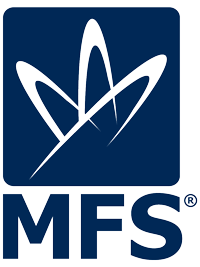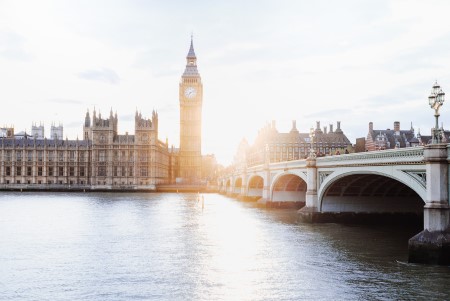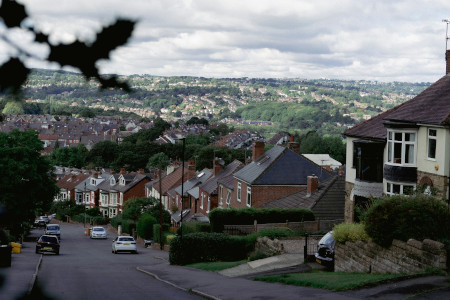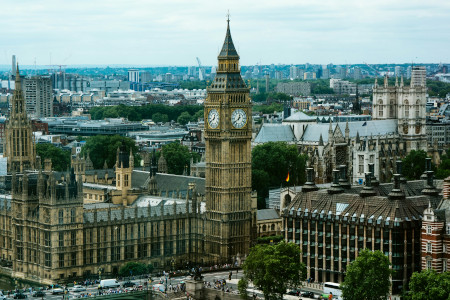Market Financial Solutions are a bridging loan and buy-to-let mortgage provider and are not legal, financial, investment or tax advisers. This document is for informational purposes only and does not, and should not be considered, to constitute legal, financial, investment or tax advice or be relied upon by any person to make a legal, financial, investment or tax decision. Therefore, Investors are encouraged to seek appropriate professional advice. The information in this content is correct at time of writing.

Becoming a landlord can be incredibly attractive, even considering the recent difficulties afflicting the market. Yields are at record highs[1], and demand for rental property is still outpacing supply[2]. But, property investors need to remember there are minimum standards for rented housing in the UK at play. What’s more, these UK housing standards are set to be tightened even further over the coming months and years.
For landlords, and those looking to enter the BTL space for the first time, there are minimum rental requirements that must be met. The Government maintains and updates a “checklist” for landlords in England, and the latest version can be found here.
This blog will help landlords get to grips with housing standards for rented houses and flats in more detail, while also breaking down what may be on the horizon.
1. Make sure your property is structurally sound
To adhere to the minimum standards for rented housing in the UK, landlords need to ensure the property is in secure condition for as long as it’s rented out. This sounds obvious, but every element of the property needs to be safe. Fixtures and fittings need to be steady. The roof must be in solid condition. No water should be leaking from any part of the home.
For landlords, it’s their responsibility to regularly check on these kinds of major elements, repair them where issues arise, and act as soon as possible. Primarily, as Citizens Advice[3] highlights, this will concern:
- The structure of the property, for example walls, roof, windows, and doors
- Sinks, baths, toilets
- Pipes and wiring
- Heating and hot water, for example the boiler
- The safety of gas and electrical appliances
However, landlords should remember that they won’t be responsible for everything that happens in the property. Tenants will be responsible for more minor repairs that emerge. Examples include changing fuses and light bulbs.
Broadly, landlords need to keep an eye out for faulty or exposed wiring, large cracks, general damage and – arguably most importantly – mould. While it may not always be their responsibility to address dampness in the property, untreated mould has become a contentious issue in the market.
More focus is being placed on landlords to tackle mould issues before they have a chance to cause any serious damage[4]. Awaab’s Law[5], which originally only affected social landlords, will soon be rolled out to the private rented sector (PRS[6]). With over 60% of people in the UK having reported experiencing mould in their homes, this is an issue landlords will need to be on top of[7].
2. There should be no hazards that risk harming tenants
Tenants have a right to be safe in their home. Landlords need to address any obvious dangers to ensure minimum rental requirements. None of the windows should be broken. Hot water needs to be readily available. Solid lighting will minimise the risk of trips and falls.
The Government has a “How to rent a safe home guide” which breaks down the main hazards tenants could be affected by. This involves:
- Cold – a cold home is one that cannot be maintained at a temperature between 18°C to 21°C at a reasonable cost to the occupier
- Damp and mould – Damp and mould can cause or worsen respiratory problems, infections, allergies or asthma
- Heat – Excess heat in a property can cause dehydration, strokes, heart attacks, breathing difficulties and infections. This is more likely to affect older people
- Trip and fall hazards – Trips and falls can lead to significant injury, broken bones or loss of confidence. These are more likely to take place in baths and showers, on stairs or around low balconies and windows
- Fire risks – Fire can cause serious harm, or death, from burns and the inhalation of smoke or gas
- Electrical hazards – Faulty wiring and old, untested electrical installations can lead to fires, shocks, burns and even death. Wired fuses or cartridges present a much higher risk and are a significant fire hazard
- Overcrowding – It is illegal for landlords to let a property to more people than it is suitable for. Overcrowding can cause accidents and the spread of contagious disease and can prevent quick and safe exit in the event of a fire
- Security – properties should be safe and secure, minimising the risk of burglary
- Lighting and noise – Inadequate lighting and excessive noise can cause health problems, as well as things like trips and falls
- Hygiene – Poor hygiene can cause illness, so you should be able to keep your property clean, prepare meals safely and rely on well-functioning drainage
- Water supply – Inadequate or unsafe water supply or lack of space for personal washing and for clothes washing or drying, and lack of facilities for the removal of wastewater (blocked/broken drainpipes) can lead to illness
- Pests and vermin – Infestations from insects, rats and mice can cause illness including vomiting and diarrhoea. They can also cause asthma, other allergic reactions and stress. Pests can contaminate food and preparation surfaces
- Chemicals and hazardous substances – Landlords should keep an eye out for asbestos, lead paint, faulty appliances etc
- Structural defects – Properties that have been badly maintained can lead to a risk of physical injury
- Product safety – both tenants and landlords should check regularly to ensure all products, fixtures and fittings are safe and that there haven’t been any product recalls
For the safe supply of gas, electricity, and water specifically, it’s advisable to conduct regular property inspections. The National Residential Landlords Association has a guide on how to conduct these inspections.
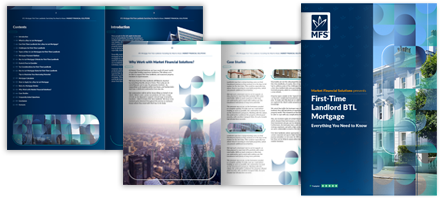
The Complete Guide to First-Time Landlord Buy-to-Let Mortgages
Everything you need to know
3. Get a property as safe from fire as possible
Generally, landlords must provide smoke alarms on each floor of the home they’re renting out. they will also need to[8]:
- Make sure the furniture and appliances provided are safe
- Organise repairs for faulty gas appliances, pipework, or electric wiring
- Meet the extra fire safety responsibilities needed for houses in multiple occupation (HMO)
Minimum standards for rented housing in the UK dictate that private landlords must check the alarms are working on the first day of the tenancy. They must also install carbon monoxide alarms in rooms with appliances that burn fuel. Examples include a gas boiler, or a wood burning stove.
4. Check all your gas and electrical equipment is safe
For the gas equipment, landlords must make sure it is all safely installed and maintained by a “Gas Safe” registered engineer.
They must provide their tenants with a Landlord Gas Safety Record (LGSR[9]) with details of all these checks before they move in, or within 28 days of the checks occurring. Beyond this, they must have a registered engineer do an annual gas safety check on each appliance and flue.
They’ll also be required to make sure the electrical system is safe. Think plug sockets and light fittings. The same goes for electrical appliances such as cookers and kettles[10]. The minimum standards for rented housing generally cover most appliances in a property.
5. Furbish a home with safe furniture
Any soft furnishings in a property must meet fire safety standards. If any items have any issues, they need to be repaired or replaced.
Furniture provided must have the required fire safety labels, and be fire resistant. Further guidance on these standards can be found with The Office for Product Safety and Standards. These minimum standards apply to a wide range of furniture, including: sofas, chairs, beds, and mattresses.
Here is a list on the Furniture and Furnishings (Fire Safety) Regulations that need to be kept on top of.
6. Secure the tenant’s deposits in a deposit protection scheme
Where landlords rent their properties to tenants, they’ll usually take a deposit from them, known as a tenancy deposit. This protects landlords should their tenants fall behind on their rent, or damage the property. In England, landlords can request security deposits of up to five weeks’ rent if the annual rent for the property is less than £50,000 a year, or six weeks if the annual rent is above £50,000[11].
But while this deposit protects landlords, by law they have to hold the money in a deposit protection scheme. In England and Wales, there are three deposit protection schemes: the Deposit Protection Service, MyDeposits, and the Tenancy Deposit Scheme.
When tenants pay their deposits, landlords will need to confirm the following to them within 30 days[12]:
- the address of the rented property
- how much deposit you’ve paid
- how the deposit is protected
- the name and contact details of the tenancy deposit protection (TDP) scheme and its dispute resolution service
- their (or the letting agency’s) name and contact details
- the name and contact details of any third party that’s paid the deposit
- why they would keep some or all of the deposit
- how to apply to get the deposit back
- what to do if you cannot get hold of the landlord at the end of the tenancy
- what to do if there’s a dispute over the deposit
7. What happens if landlords don’t stick to these housing standards for rented houses?
Local authorities can inspect a property (via a local authority environmental health officer) to see if a landlord is in breach of any UK housing standards[13]. If they have broken the rules, you can be forced to take action to amend the issue(s).
Typically, this involves improvement notices. But prohibition orders, hazard awareness notice, or demolition orders may also be issued. The details on all these enforcement actions can be found here[14].
If landlords fall foul of these rules, they could face fines of up to £30,000. In more extreme cases, they could even be taken to court, or end up in jail.
8. The Renters’ Rights Bill
The looming Renters’ Rights Bill, which will also usher in Awaab’s Law, will have the biggest impact on landlords and rental standards over the coming months. While both these forms of legislation are wide ranging, there are a few new minimum standards for rented housing they’ll introduce across the UK.
This includes[15]:
- requiring landlords to give a written “statement of terms” to tenants before the tenancy is entered into
- removing fixed-term assured tenancies, meaning landlords will be forced to issue periodic tenancies
- providing tenants with the right to request a pet
- applying a “decent homes standard” to the private rented sector. To be considered “decent” under the proposals, a home must be in a reasonable state of repair, have reasonably modern facilities and services, provide a reasonable amount of thermal comfort, and contain no Category 1 hazards under the Housing Health and Safety Rating System (HHSRS[16])
9. What should landlords prioritise?
There is much that needs to be considered when it comes to minimum standards for rented housing in the UK. But, according to Total Landlord Insurance[17], there are few categories in which remedial actions can be prioritised:
- Physiological requirements: damp and mould growth, excess cold, excess heat, carbon monoxide and fuel combustion products
- Psychological requirements: crowding and space, lighting, noise
- Protection against infection: domestic hygiene, pests and refuge, water supply, drainage
- Protection against accidents: fire, electrical hazards, collision and entrapment
Of course, keeping on top of minimum standards for rented housing in the UK may require ongoing investment from property investors and landlords. Fortunately, our Permitted & Light Development Bridging Loans can help with a range of refurbishment, renovation, and conversion strategies. As landlords adapt to tougher new minimums, we’ll be there to support them.
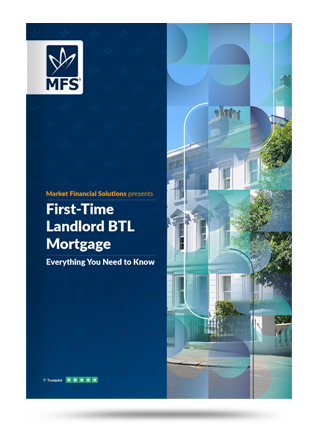
The Complete Guide to
First-Time Landlord BTL Mortgages
Everything you need to know
- Comprehensive 22-page guide
- Mortgage types & repayment options
- Costs, fees, rates & tax considerations
- Maximise borrowing & circumvent challenges
- Real-life examples
[1] https://www.mortgagefinancegazette.com/market-news/btl-rent-yields-hit-14-year-high-paragon-14-05-2025/
[2] https://www.lettingagenttoday.co.uk/breaking-news/2025/05/nine-applicants-compete-for-each-available-rental-home-propertymark/
[3] https://www.citizensadvice.org.uk/housing/repairs-and-housing/repairs-and-housing-conditions/whos-responsible-for-repairs/check-if-your-landlord-has-to-do-repairs/
[4] https://commonslibrary.parliament.uk/helping-tenants-with-damp-and-mouldy-housing-england/
[5] https://www.housing.org.uk/resources/awaabs-law/
[6] https://www.property118.com/awaabs-law-what-every-private-landlord-should-know-now/
[7] https://www.landlordtoday.co.uk/features/2025/01/the-growing-problem-of-mould-a-deep-dive-into-uk-housing/
[8] https://england.shelter.org.uk/housing_advice/repairs/fire_safety_in_rented_homes
[9] https://www.gassaferegister.co.uk/gas-safety/renting-a-property/landlord-gas-responsibilities/#:~:text=By%20law%2C%20a%20copy%20of,the%20start%20of%20their%20tenancy.
[10] https://www.gov.uk/private-renting/your-landlords-safety-responsibilities
[11] https://www.ashfords.co.uk/insights/articles/tenancy-deposits-in-2025-strengthening-landlords-compliance-under-the-renters-rights-bill#:~:text=The%20current%20position%20in%20England,rent%20is%20above%20%C2%A350%2C000.
[12] https://www.gov.uk/tenancy-deposit-protection/information-landlords-must-give-tenants
[13] https://commonslibrary.parliament.uk/helping-tenants-with-damp-and-mouldy-housing-england/
[14] https://england.shelter.org.uk/professional_resources/legal/housing_conditions/local_authority_duties_to_deal_with_poor_conditions/local_authority_hhsrs_enforcement_action#title-5
[15] https://www.totallandlordinsurance.co.uk/knowledge-centre/what-does-labours-renters-rights-bill-mean-for-landlords
[16] https://www.landlordtoday.co.uk/breaking-news/2025/05/over-a-fifth-of-rental-properties-set-to-fail-decent-homes-standard/
[17] https://www.totallandlordinsurance.co.uk/knowledge-centre/how-to-rent-a-safe-home
